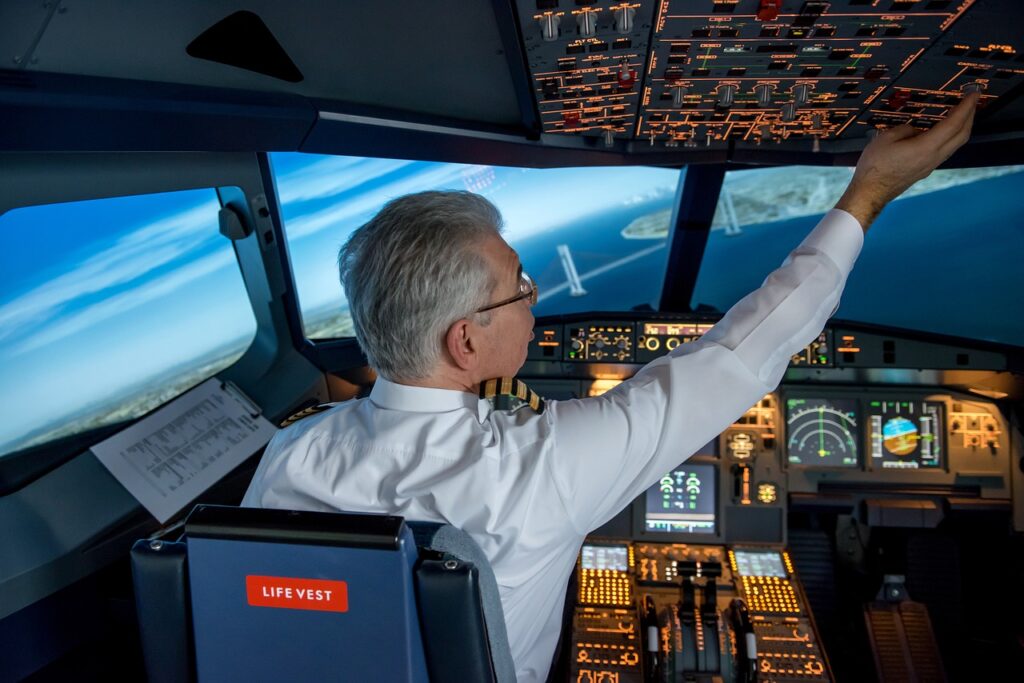Why Pilot Shortages Are Still A Problem And What Airlines Are Doing About It
Airlines are offering higher pay and more training opportunities in an attempt to combat sustaining pilot shortages.
This article is more than 2 years old
Pilot shortages have been plaguing airlines worldwide for almost two years. When the mask mandates started coming down in early 2022, more people were buying plane tickets for international and domestic flights. Unfortunately, CNBC reported, carriers were unprepared for the type of traveler influx they received, leading to thousands of delays and cancellations that started last Memorial Day. Airlines are still committed to adding and training necessary pilots to mitigate the understaffing issues.
Management consulting firm Oliver Wyman estimated that 11% of the needed pilot workforce is gone. Airlines would need more than 8,000 new staff members to curtail the pilot shortage, but that figure is only growing. By 2025, Oliver Wyman believes that the number could reach 30,000 pilots.
Though carrier executives didn’t know what to do when COVID hit, much of the current understaffing issue has to do with their rash decisions. When flights were grounded at the pandemic’s beginning, major airlines pushed their pilots into early retirement. Thousands of veteran pilots were given large retirement packages to get them out of the force, unaware that travelers would come back immensely the following year. With the pilot shortage influenced by executive decisions, it’ll be up to airline higher-ups to solve the problem they exacerbated.

Dennis Tajer, the spokesman for the Allied Pilots Association and a pilot with American Airlines, discussed their level of disbelief about the pilot shortage. The dire need for trained pilots showcases that airlines “failed as an institution,” they stated. Tajer added that it’s nice to see more availability for pilots at worldwide carriers, but, unfortunately, reckless decisions have led to these pilot openings.
So, how will significant carriers attract new talent to fill their open positions? Many airlines are pushing their pilot training to in-house programs, while others provide financial incentives to entice suitable candidates. Alaska Airlines’ Ascend Pilot Academy, created earlier this year, will give heightened employment opportunities and better pay raises for pilots who complete their training. Wage and benefit incentives could be the best way to undermine the undoing pilot shortage.
Though the pilot shortage affects every business involved in commercial air travel, understaffing issues will likely hit regional carriers the hardest. Like other airlines, regional ones are hiking up their pilot salaries in order to retain them. While massive airlines like United Airlines and American Airlines can sustain the increase in staff wages, smaller carriers don’t have the same revenue to withstand thousands of wage bumps. Carriers operating aircraft with 50 seats or less are in big trouble if this pilot shortage continues.
Airlines are also having trouble incentivizing ex-military airplane pilots from joining their companies. While the military is a big employer for national carriers, the pilot shortage is inflating due to unsatisfactory pay. Though wages and salaries for pilots have been increasing, many believe significant changes will have to occur to entice ex-military pilots adequately.
Airlines are trying everything they can to stabilize the ongoing pilot shortage, but compounding factors make it increasingly difficult. With inflation still sky-high, raising salaries could end up tanking carriers if they’re not making sufficient revenue.





